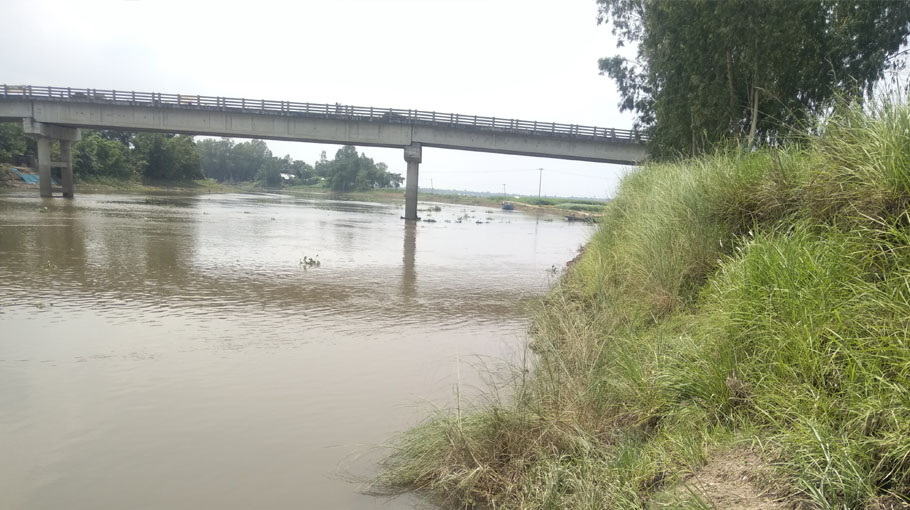Erosion in Gumani intensifies, hundreds of houses engulfed

Hundreds of houses are being engulfed in the silent erosion of Gumani River flowing through Chaikola, Handial, Nimaichara and Bilchalan unions of Chatmohar upazila of Pabna district. Cemeteries, educational institutions, Eidgah grounds and other social institutions are also disappearing in the Gumani River. As the demolition continues year after year, many people have lost their homes and are forced to move elsewhere to build new houses. In the erosion affected areas, at a very slow rate of 5 to 6 feet per year, all the land or houses are washed away in the river. Due to the slow erosion in the rainy season, it is not visible to anyone. Although about 500 meters of riverbank was protected at Chaikola Point to prevent river erosion in the area, no one was ever seen to take any action to prevent erosion in the remaining 6 kilometers of the eroded area.
According to the Itikatha book of Chalan Beel, written by Principal Abdul Hamid, the rivers Atrai and Gur originating from the hills of Jalpaiguri came to Rajshahi and later split into several branches. One of its tributaries flows through Koyrabari, Nandanali, and Atrai, at a distance of one mile from Atrai Ghat, under the name of 'Gur', through Singra, Ekanna Bigha, Jogendranagar and Kalakandar and merges with Nanda Kujar at Chanchkair Trimohana. Together they flowed eastwards in the name of Gumani, came to the Mathurapur area of Chatmohar, joined the Baral river and went downstream to the Jamuna.
Moktar Hossain, a school teacher from Natabaria village in Bilchalan union, said there was a silent erosion in the area of about one kilometer adjacent to the river in Natabaria village. In the last 20 to 25 years, many settlements including Natabaria Government Primary School have been washed away by the river. The Gumani River has also consumed some cultivable lands. Sagar Mahmud of Karkola village said that an area of about 500 meters downstream from Bausha Bridge was eroded. The road is breaking and disappearing in the river Gumani. Meanwhile, Karkola cemetery and Eidgah ground have also been washed away by the river.
The people of the village have raised money and bought land and built a new cemetery.
Rakib Hossain of Charsen village said that an area of about 500 meters of the village was eroded. In the last twenty years, about 50 families in the affected areas have built houses elsewhere. The Gumani river has swallowed up some cultivable lands. Rafiqul Islam of Binyabari village said that several houses including Binyabari Government Primary School have been washed away by the river Gumani. Many people's settlements including Dhankunia Hat and Dhankunia Cemetery have been wiped out in the Gumani river.
Ratan Hossain of Bardanagar village said that Bardanagar market and Eid ground are gradually disappearing into the river. More than a hundred settlements of this village have been washed away in the river Vita. Besides, the settlements and cultivable lands of the people of several riverside villages including Gaurnagar, Langal Mora, Charanbeen, Kukragari have been washed away by the river. Hasinur Rahman, an assistant professor at Chaikola Degree College, said that although some areas at Chaikola Point had been protected by the BOC, hundreds of thousands of people on the banks of Gumani in Chatmohar had been displaced by the river for a long time. Lecturer Firoza Parveen, female vice chairman of Chatmohar Upazila Parishad, said that the length of Gumani in Chatmohar section is about 12 kilometers. Somewhere within these 12 kilometers, the other side is breaking. In some parts of the river, chars are rising. The people of the area are suffering due to the disappearance of roads, houses, religious and social institutions in the river. Erosion can be prevented by identifying and preserving the eroded area.
Chatmohar Upazila Nirbahi Officer Saikat Islam said, "We will look into the matter and if necessary, we will inform the officials of Water Development Board."




